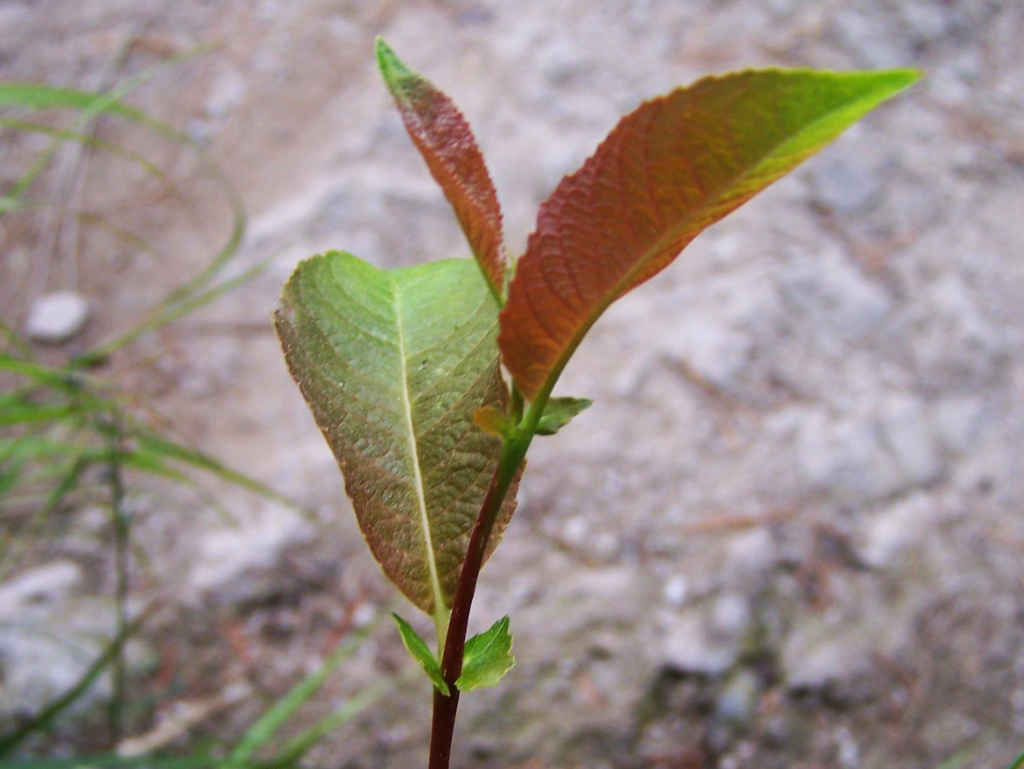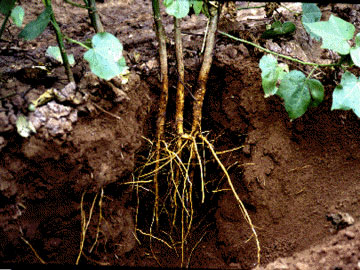|
Willow
Willows, also called sallows and osiers, of the genus ''Salix'', comprise around 350 species (plus numerous hybrids) of typically deciduous trees and shrubs, found primarily on moist soils in cold and temperate regions. Most species are known as willow, but some narrow-leaved shrub species are called osier, and some broader-leaved species are referred to as sallow (from Old English ''sealh'', related to the Latin word ''salix'', willow). Some willows (particularly arctic and alpine species) are low-growing or creeping shrubs; for example, the dwarf willow (''Salix herbacea'') rarely exceeds in height, though it spreads widely across the ground. Description Willows all have abundant watery bark sap, which is heavily charged with salicin, soft, usually pliant, tough wood, slender branches, and large, fibrous, often stoloniferous roots. The roots are remarkable for their toughness, size, and tenacity to live, and roots readily sprout from aerial parts of the plant. Lea ... [...More Info...] [...Related Items...] OR: [Wikipedia] [Google] [Baidu] |
Salix Alba
''Salix alba'', the white willow, is a species of willow native to Europe and western and Central Asia.Meikle, R. D. (1984). ''Willows and Poplars of Great Britain and Ireland''. BSBI Handbook No. 4. .Rushforth, K. (1999). ''Trees of Britain and Europe''. Collins . The name derives from the white tone to the undersides of the leaves. It is a medium to large deciduous tree growing up to 10–30 m tall, with a trunk up to 1 m diameter and an irregular, often-leaning crown. The bark is grey-brown and is deeply fissured in older trees. The shoots in the typical species are grey-brown to green-brown. The leaves are paler than most other willows because they are covered with very fine, silky white hairs, in particular on the underside; they are 5–10 cm long and 0.5–1.5 cm wide. The flowers are produced in catkins in early spring and are pollinated by insects. It is dioecious, with male and female catkins on separate trees; the male catkins are 4–5 cm ... [...More Info...] [...Related Items...] OR: [Wikipedia] [Google] [Baidu] |
Shrub
A shrub or bush is a small to medium-sized perennial woody plant. Unlike herbaceous plants, shrubs have persistent woody stems above the ground. Shrubs can be either deciduous or evergreen. They are distinguished from trees by their multiple Plant stem, stems and shorter height, less than tall. Small shrubs, less than tall are sometimes termed as subshrubs. Many botany, botanical groups have species that are shrubs, and others that are trees and herbaceous plants instead. Some define a shrub as less than and a tree as over 6 m. Others use as the cutoff point for classification. Many trees do not reach this mature height because of hostile, less than ideal growing conditions, and resemble shrub-sized plants. Others in such species have the potential to grow taller in ideal conditions. For longevity, most shrubs are classified between Perennial plant, perennials and trees. Some only last about five years in good conditions. Others, usually larger and more woody, live beyond ... [...More Info...] [...Related Items...] OR: [Wikipedia] [Google] [Baidu] |
Salix Herbacea
''Salix herbacea'', the dwarf willow, least willow or snowbed willow, is a species of tiny creeping willow (family Salicaceae) adapted to survive in harsh arctic and subarctic environments. Distributed widely in alpine and arctic environments around the North Atlantic Ocean, it is one of the smallest woody plants. Distribution ''Salix herbacea'' is adapted to survive in harsh environments, and has a wide distribution on both sides of the North Atlantic, in arctic northwest Asia, northern Europe, Greenland, and eastern Canada, and further south on high mountains, south to the Pyrenees, the northern Apennines, the Alps and the Rila in Europe, and the northern Appalachian Mountains in the eastern United States. It grows in tundra and rocky moorland, usually at over elevation in the south of its range but down to sea level in the Arctic.Meikle, R. D. (1984). ''Willows and Poplars of Great Britain and Ireland''. BSBI Handbook No. 4. .Salicaceae of the Canadian Arctic Archipelago''Sa ... [...More Info...] [...Related Items...] OR: [Wikipedia] [Google] [Baidu] |
Salicin
Salicin is an alcoholic β-glucoside. Salicin is produced in (and named after) willow (''Salix'') bark. It is a biosynthetic precursor to salicylaldehyde. Salicin hydrolyses into Glucose, β-d-glucose and salicyl alcohol (saligenin). Salicyl alcohol can be oxidized into salicylaldehyde and salicylate, both biologically and industrially. Medicinal aspects Salicin is found in the bark of and leaves of willows, Populus , poplars and various other plants. Derivates are found in castoreum. Salicin from Filipendula ulmaria , meadowsweet was used in the synthesis of aspirin (acetylsalicylic acid), in 1899 by scientists at Bayer. Salicin tastes bitter like quinine. Salicin may cause an allergic skin reaction (skin sensitization; category 1). Mild side effects are standard, with rare occurrences of nausea, vomiting, rash, dizziness and breathing problems. Overdose from high quantities of salicin can be toxic, damaging kidneys, causing stomach ulcers, diarrhea, bleeding or digestive d ... [...More Info...] [...Related Items...] OR: [Wikipedia] [Google] [Baidu] |
Systematic Botany Monographs
Systematic may refer to: Science * Short for systematic error * Systematic fault * Systematic bias, errors that are introduced by an inaccuracy inherent to the system Economy * Systematic trading, a way of defining trade goals, risk controls and rules that can make investment and trading decisions in a methodical way * Systematic Paris-Region: French business cluster devoted to complex systems Music * Systematic (band), American hard rock band * Systematic Chaos, a 2007 album by Dream Theater Others * Systematic SitaWare, a Danish software company; see See also * Systematics (other) * Systemic (other) {{disambiguation ... [...More Info...] [...Related Items...] OR: [Wikipedia] [Google] [Baidu] |
Mediterranean
The Mediterranean Sea ( ) is a sea connected to the Atlantic Ocean, surrounded by the Mediterranean basin and almost completely enclosed by land: on the east by the Levant in West Asia, on the north by Anatolia in West Asia and Southern Europe, on the south by North Africa, and on the west almost by the Morocco–Spain border. The Mediterranean Sea covers an area of about , representing 0.7% of the global ocean surface, but its connection to the Atlantic via the Strait of Gibraltar—the narrow strait that connects the Atlantic Ocean to the Mediterranean Sea and separates the Iberian Peninsula in Europe from Morocco in Africa—is only wide. Geological evidence indicates that around 5.9 million years ago, the Mediterranean was cut off from the Atlantic and was partly or completely desiccated over a period of some 600,000 years during the Messinian salinity crisis before being refilled by the Zanclean flood about 5.3 million years ago. The sea was an important rout ... [...More Info...] [...Related Items...] OR: [Wikipedia] [Google] [Baidu] |
Root
In vascular plants, the roots are the plant organ, organs of a plant that are modified to provide anchorage for the plant and take in water and nutrients into the plant body, which allows plants to grow taller and faster. They are most often below the surface of the soil, but roots can also be aerial root, aerial or aerating, that is, growing up above the ground or especially above water. Function The major functions of roots are absorption of water, plant nutrition and anchoring of the plant body to the ground. Types of Roots (major rooting system) Plants exhibit two main root system types: ''taproot'' and ''fibrous'', with variations like adventitious, aerial, and buttress roots, each serving specific functions. Taproot System Characterized by a single, main root growing vertically downward, with smaller lateral roots branching off. Examples. Dandelions, carrots, and many dicot plants. Fibrous RootSystem Consists of a network of thin, branching roots that spread out from ... [...More Info...] [...Related Items...] OR: [Wikipedia] [Google] [Baidu] |
American Society Of Plant Taxonomists
The American Society of Plant Taxonomists (ASPT) is a botany, botanical organization formed in 1935 to "foster, encourage, and promote education and research in the field of plant taxonomy, to include those areas and fields of study that contribute to and bear upon taxonomy and herbaria", according to its bylaws. It is incorporated in the state of Wyoming, and its office is at the University of Wyoming, Department of Botany. The ASPT publishes a quarterly botanical journal, ''Systematic Botany'', and the irregular series ''Systematic Botany Monographs''. The society gives annual awards for excellence in Botany. The Society gives the Asa Gray Award for "outstanding accomplishments pertinent to the goals of the Society," and the Peter Raven Award to a botanist who has "made exceptional efforts at outreach to non-scientists." __TOC__ Asa Gray Awardees *2021: Elizabeth Kellogg *2020: Jeff Doyle *2019: Lucinda McDade *2018: Vicki Funk *2017: Michael Donoghue *2016: Peter F. Stevens *201 ... [...More Info...] [...Related Items...] OR: [Wikipedia] [Google] [Baidu] |
Coriaceous
This glossary of botanical terms is a list of definitions of terms and concepts relevant to botany and plants in general. Terms of plant morphology are included here as well as at the more specific Glossary of plant morphology and Glossary of leaf morphology. For other related terms, see Glossary of phytopathology, Glossary of lichen terms, and List of Latin and Greek words commonly used in systematic names. A B ... [...More Info...] [...Related Items...] OR: [Wikipedia] [Google] [Baidu] |




